
It was a great privilege to be able to meet and photograph several leading figures from Australia who were here in London. If you look hard at the picture above, in the middle close to the bottom you can see a man playing a guitar, Australian Aborigine musician and activist Bunny Lawrie, one of the Jirkala Mirning people of southern Australia.
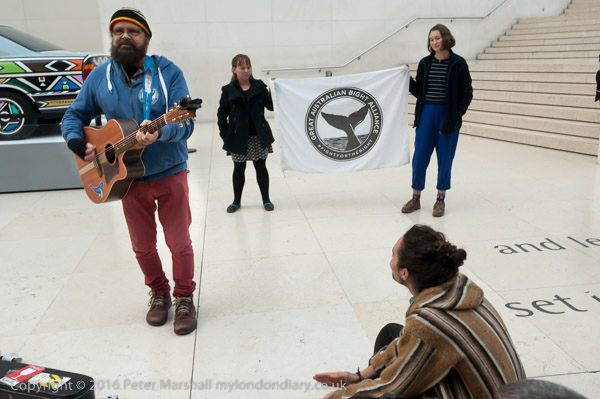
His unofficial performance in the Great Hall of the British Museum told the story of how BP, who the British Museum supports through its sponsorship deal which puts a cultural gloss on its murkier activities, were forced to drop plans to drill in the Great Australian Bight, and of the continuing fight to stop drilling by BP’s partner Statoil and others.
The British Museum’s collection holds a number of items from indigenous cultures around the world, many of which were initially taken by rather dubious means. When Captain Cook and his crew tried to make their first landing in Australia at Botany Bay in 1770 they were met by two Gweagal warriors with spears and shields. Accounts differ of the exact nature of that meeting, but it ended with Cook’s men firing muskets at the two men, one of whom, Cooman, was hit in the leg, and the warriors dropped their spears and ran.
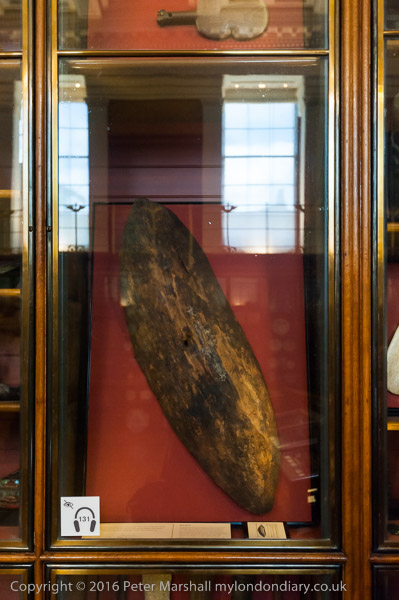
When Cook returned to Europe, he brought with him around 40 spears and other artifacts that they found on the beach. Among these was the wooden shield which Cooman had held, complete with a hole made by the musket round. Rodney Kelly, a sixth generation descendant of Cooman was in England to demand the return of this shield to Australia, where it would be an important exhibit in a new museum to be opened in Sydney on the 250th anniversary of Cook’s landing. The following week he went to the museum to discuss the return of the shield, but unfortunately was met with a refusal – they are unwilling to part with any of the objects in the museum.
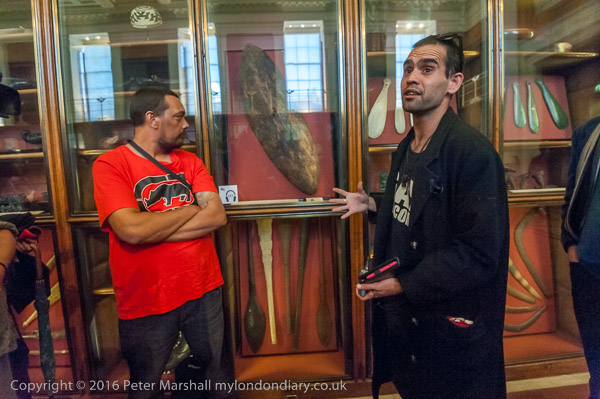
In the British Museum the shield is hidden in a display in a glass windowed cabinet, with little being made of its historical significance. Reflections make it difficult to view, and the lighting is low, presumably for conservation reasons, though with daylight coming in from the windows the UV levels may be higher than acceptable. Most visitors would not be aware of its presence, though it is featured on the audio tour, but today it did attract a small crowd as Kelly knelt in front of it to pay his respects to his ancestor and then talked about it and the events.
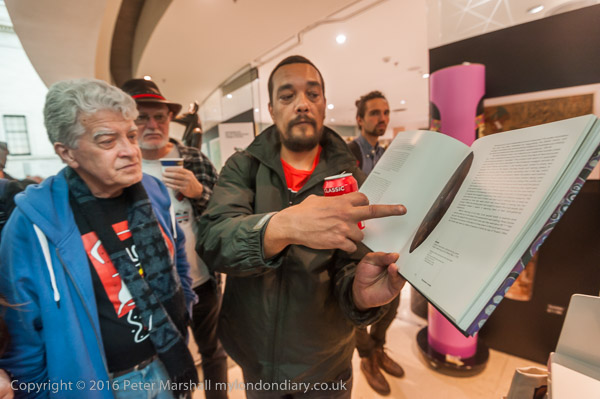
Later he posed with a reproduction of the shield in a catalogue in the museum bookshop. The photograph appeared to show it in better condition than it was now and he and the others expressed worries about its conservation, though it could simply be that the photograph has been a little tweaked to make the red ochre more visible.
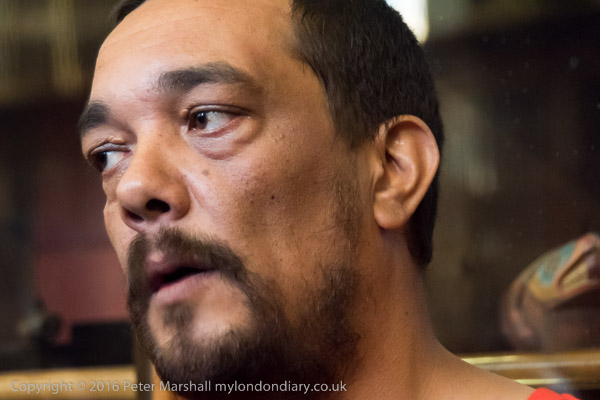
For the pictures taken in the long gallery (The Kings Library) where the shield is kept, I decided that using flash would be inappropriate and obtrusive, though there were a few flashes from other photographers. Of course with the glass on the cabinets, reflections of the flash would made pictures taken more or less straight on impossible in any case.
Using the D810, most of the images taken there were at ISO 6400, a stop higher than I like to use, but even then with my 28-200 generally at full aperture, shutter speeds dropped to 1/20th of a second. Of course that lens is a slow lens, but a faster lens wouldn’t really have helped much as when filling the frame with people’s heads I was working at around 160mm focal length equivalent and needed the depth of field that f5.6 provided. Some were sharp enough to use, but quite a few were not. For some pictures a vibration reduction lens would have helped, but I think much of the blur was due to the people moving rather than the camera.
With the D700 I kept the ISO at 3200, the wider 16-35mm allowing me to use slower speeds with the lens wide open at f4. Once out into the Great Hall the light was much brighter and I was working at around ISO 1000 with the longer lens and ISO 400 with the wide-angle.
Give back Cooman’s Shield
Great Australian Bight Alliance
______________________________________________________
There are no adverts on this site and it receives no sponsorship, and I like to keep it that way. But it does take a considerable amount of my time and thought, and if you enjoy reading it, a small donation – perhaps the cost of a beer – would be appreciated.
My London Diary : Buildings of London : River Lea/Lee Valley : London’s Industrial Heritage
All photographs on this and my other sites, unless otherwise stated, are taken by and copyright of Peter Marshall, and are available for reproduction or can be bought as prints.
To order prints or reproduce images
________________________________________________________